This post may contain affiliate links. See my disclosure policy.
Perfectly Poached Chicken Breasts are tender, juicy, flavorful, and take less than 30 minutes to make start to finish. An incredible source of lean and nutritious protein, learn how to poach chicken breasts and use in all your favorite recipes from classic chicken salad to chicken noodle soup.
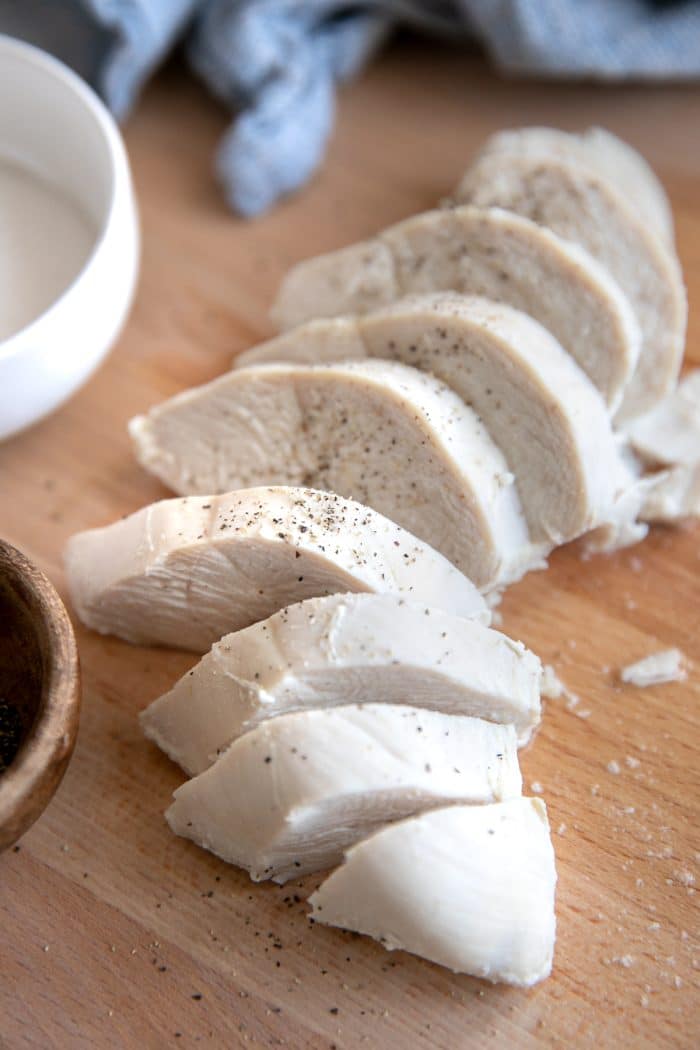
What is Poaching?
Poaching is a “moist heat” cooking technique where food is submerged in a liquid (water, milk, stock, or wine) and cooked using a relatively low temperature (about 160–180 °F (71–82 °C)). Unlike aggressive boiling, poaching is a gentle form of cooking perfect for chicken, fish, and eggs which are prone to falling apart.
There are two main types of poaching,
Shallow Poaching:
Shallow poaching is best implemented when cooking boneless, naturally tender, or pre-sliced pieces of meat such as poultry or fish. In this method, you will coat the inside of your pan with butter and then add the aromatics. The food is then placed directly on top.
Next, you’ll add a cold poaching liquid directly into the pan, but stopping once the food is partially submerged. The liquid is gently heated just until simmering, but never boiled, instead it is maintained at a poaching temperature. The leftover liquid, or cuisson, is often reduced and prepared into a sauce for the main dish.
Deep Poaching:
Deep poaching is very similar to shallow poaching, however, the meat or food being prepared is fully submerged in a liquid or broth. With this technique, there is plenty of space for the food, aromatics, and liquid to move about comfortably, allowing liquid to expand as it heats.
This is always my preferred poaching method whenever I am preparing poached chicken.
What is Poached Chicken?
Poached chicken is simply chicken that has been submerged and cooked in a liquid at a relatively low and consistent temperature. Sometimes poached in just water or other times in a more complex and flavorful broth filled with herbs and aromatics, the result (when cooked correctly) is juicy, delicious, low-fat, and most importantly, tender chicken.
How to Poach Chicken Breasts
There are two methods that I use to poach chicken breasts. Each is a version of deep poaching which means that in both cases we need a pot large enough to fully submerge the chicken with liquid.
Is one method better than the other? You guys, it’s hard to say as I suppose it depends on what you plan to use the chicken for. The method I use most often, however? Definitely method number two. It literally requires just chicken and water- that’s it. While I would always love a nice herb-infused chicken breast, sometimes I need the chicken to just get cooked. Which method you choose depends entirely on you.
Note: Scroll down to the recipe card at the bottom of the page for the full list and amounts of ingredients needed to make super easy poached chicken.
Method One
- Place chicken and any desired “optional additions” to a medium-sized pot. Add enough cold water to cover the chicken breasts by 1-2 inches.
- Set over medium-high heat and bring to a low and steady simmer. Allow chicken to simmer, uncovered, for 1-2 minutes before covering and removing from heat. Allow chicken to rest (poach) for 10-15 minutes, or until internal temperature registers 160°F as read with an instant read thermometer.
- Remove the cooked chicken from the pot and set aside on a clean plate or cutting board. Allow it to rest for at least 5 minutes before slicing, shredding, or chopping. If desired, strain the chicken broth through a fine-mesh strainer and use it to cook soup, rice, or any other recipe that calls for chicken broth.
Method Two
- Fill a pot with water. Make sure your pot is large enough to hold your chicken breasts and enough water to completely cover by at least 2-inches. Bring just to a simmer.
- Add the chicken breasts and any “optional additions” such as herbs or spices to the pot. Return water to a low and gentle simmer and cook, uncovered, for 1-2 minutes. Remove from heat and immediately cover with a lid. Allow chicken to rest (or poach) for 15-20 minutes, or until internal temperature registers 160°F as read with a digital meat thermometer.
- Remove the cooked chicken from the pot and set aside on a clean plate or cutting board. Allow it to rest for at least 5 minutes before slicing, shredding, or chopping. If desired, strain the chicken broth through a fine-mesh strainer and use it to cook soup, rice, or any other recipe that calls for chicken broth.
How to Poach Chicken Tenders
Chicken tenders, very similar to chicken breasts, are poached in the exact same way as chicken breasts except for one very big difference – the total cook time. Chicken tenders are approximately one-third to one-half the size of regular chicken breasts and as such, require a much shorter cook time.
Poach your chicken tenders following the same instructions outlined in the recipe card below, however, check for doneness (160 degrees F) after the first 6-8 minutes.
Can You Poach Frozen Chicken?
Of course! However, before getting started read the below tips and tricks,
- Always poach frozen chicken starting in cold water. Yes, you guys, this is really important. In other words, follow method 1 and totally ignore method 2. Why? Adding frozen chicken to a pot of boiling water will immediately cook the outside, not giving the inside of the chicken enough time to thaw. This results in an overcooked chewy outer layer of chicken and a potentially still frozen inside.
- Remember how we allow our chicken simmer over medium heat for 1-2 minutes before removing, covering, and setting aside to poach until cooked? Well, we’re going to do the same there here except that we’re going to let our poaching chicken hang out on heat for a few minutes more or 4-5 minutes total. After 4-5 minutes, remove from heat, cover, and set aside.
Delicious Aromatic Combinations
One of the easiest ways to infuse flavor into your chicken is by poaching it in a delicately flavored poaching liquid. It’s optional but makes a perfect place to dump any leftover herbs or spices that may otherwise go to waste.
In this example, you’ll find salt, whole black peppercorns, and a small bunch of fresh cilantro. It wasn’t much, but it definitely made for a delicious broth.
Other delicious aromatic combinations include,
- Whole star anise, black peppercorns, cinnamon stick, garlic cloves, and fresh ginger.
- Wine – especially when poaching fish or fruit.
- White wine, mirepoix (onions, carrots, celery), fresh parsley or fresh thyme, salt, and black peppercorns.
- Lemon, bay leaf, and other fresh herbs like thyme or tarragon.
Favorite Uses for Poached Chicken
There are a million different ways to use and enjoy simple, delicious, and nutritious poached chicken. Perfect for athletes trying to eat more protein or parents introducing little ones to chicken for the first time, there’s no healthier way to enjoy chicken breasts.
Salad: Poached chicken is amazingly tender and tastes wonderful in any salad recipe from creamy chicken salads, to light and healthy shredded chicken and cabbage salads.
Soup: Poach chicken directly in your favorite brothy soup, remove, and shred, chop, or slice. A few of my favorite chicken-filled soups include this Chicken Tortilla Soup, Aguadito de Pollo (Peruvian Chicken Soup), and Chicken Soup.
Add to eggs like this easy and delicious egg frittata recipe, or simply scramble with egg whites.
Add to your favorite carbs: From gnocchi in this Creamy Chicken and Tomato Gnocchi to Ramen Noodles with Spicy Chili Sauce.
Keep things low carb and make this Chicken and Broccoli Stuffed Spaghetti Squash, Cheesy Buffalo Chicken Spaghetti Squash Recipe, and Cheesy Chicken Caprese Casserole Recipe.
More Easy Recipes,
- How to Caramelize Onions
- Homemade Chicken Stock Recipe
- How to Roast an Acorn Squash
- The Best Meatloaf Recipe
- What is Mirepoix? How to Make and Use Mirepoix
- Oven Baked Chicken Breasts
If you try making this easy poached chicken recipe, please leave me a comment and let me know! I always love to read your thoughts and feedback!
Join the Club
Unlock unlimited, ad-free browsing of 1,200+ recipes, plus meal plans, easy grocery lists, exclusive recipes, and more.
Cancel anytime during your trial - no risk, no hassle.

Poached Chicken Recipe (How to Poach Chicken)
Ingredients
- 2 boneless skinless chicken breasts
- water
Optional additions
- 1 teaspoon salt
- Fresh herbs, (parsley, thyme, rosemary, etc)
- 10 black peppercorns
- 1-2 bay leaves
Instructions
Method One
- Add the chicken breasts and any desired "optional additions" to a medium-sized pot. Add enough cold water to cover the chicken breasts by 1-2 inches.
- Set over medium-high heat and bring to a low and steady simmer. Allow chicken to simmer, uncovered, for 5 minutes before covering and removing from heat. Allow chicken to rest (or poach) for 10-15 minutes, or until internal temperature registers 160°F as read with a digital meat thermometer.
- Remove chicken from the pot and set aside. Allow it to rest for at least 5 minutes before slicing, shredding, or chopping. If desired, strain the chicken broth through a fine-mesh strainer and use it to cook soup, rice, or any other recipe that calls for chicken broth.
Method Two
- Fill a pot with water. Make sure your pot is large enough to hold your chicken breasts and enough water to completely cover by at least 2-inches. Bring to a rapid boil over high heat.
- Add the chicken breasts and any "optional additions" such as herbs or spices to the pot. Return to a simmer and cook, uncovered, for 3-4 minutes. Remove from heat and immediately cover with a lid. Allow chicken to rest (or poach) for 15-20 minutes, or until internal temperature registers 160°F as read with a digital meat thermometer.
- Remove chicken from the pot and set aside. Allow it to rest for at least 5 minutes before slicing, shredding, or chopping. If desired, strain the chicken broth through a fine-mesh strainer and use it to cook soup, rice, or any other recipe that calls for chicken broth.
Notes
- Just like overcooking chicken breasts in the oven or on the grill, it's best to avoid over-poaching as it will likely result in dry, chewy meat.
- Different chicken breast sizes cook at different rates with larger breasts taking longer to cook. Adjust cooking times accordingly.
Nutrition
Nutrition information is automatically calculated, so should only be used as an approximation.
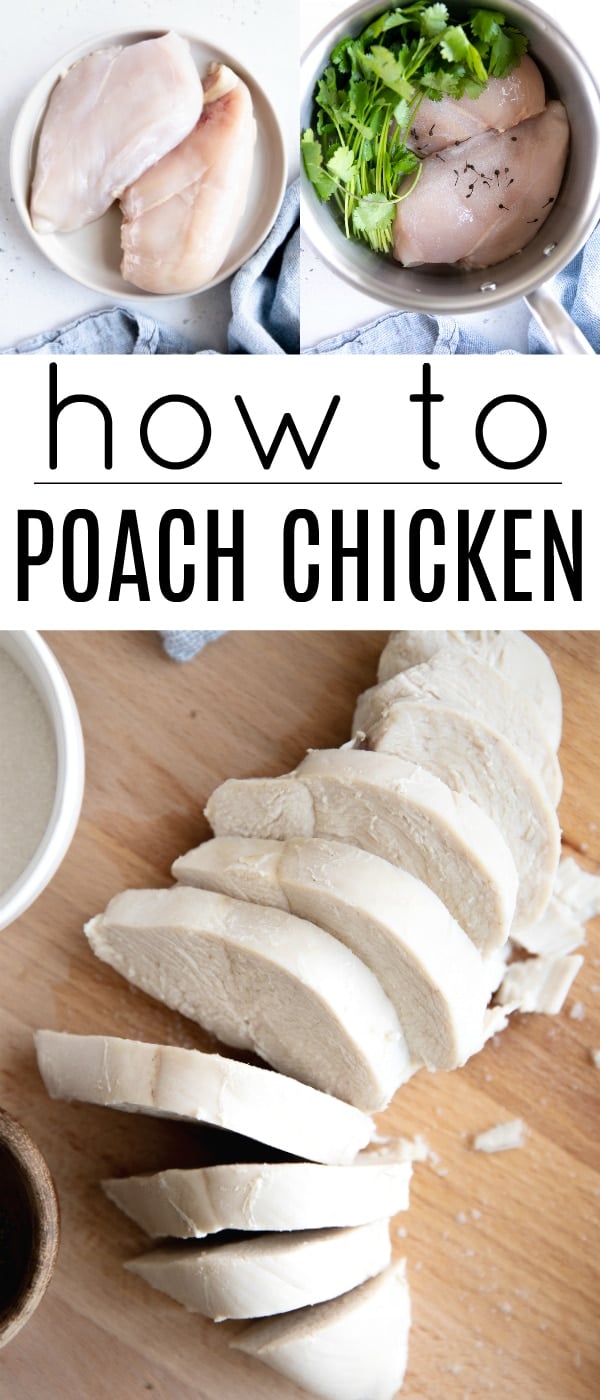
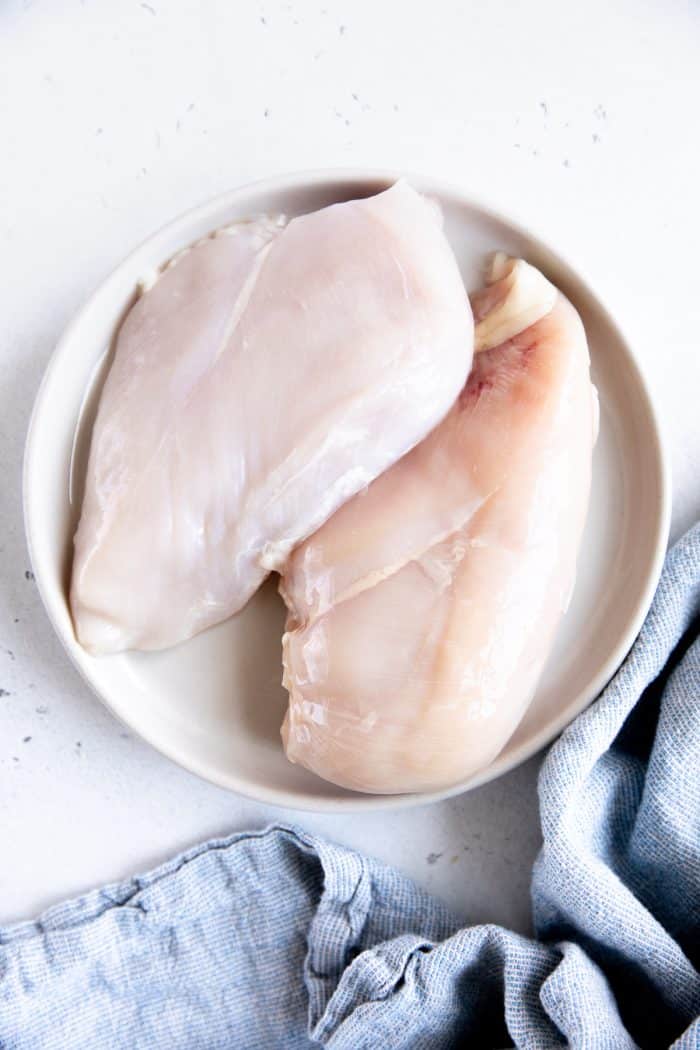
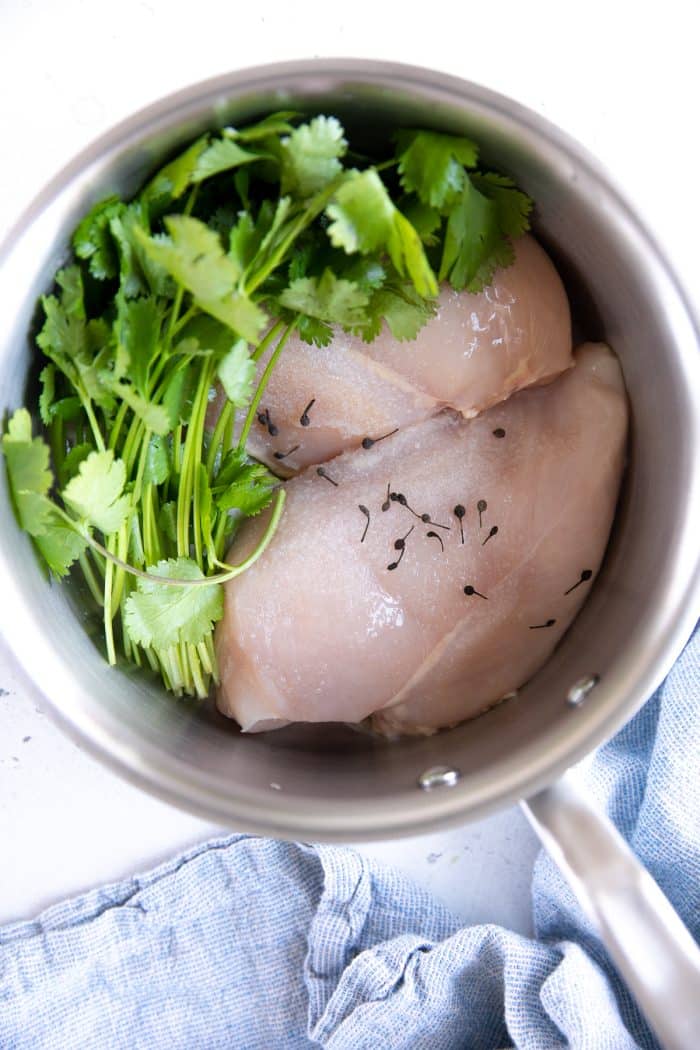

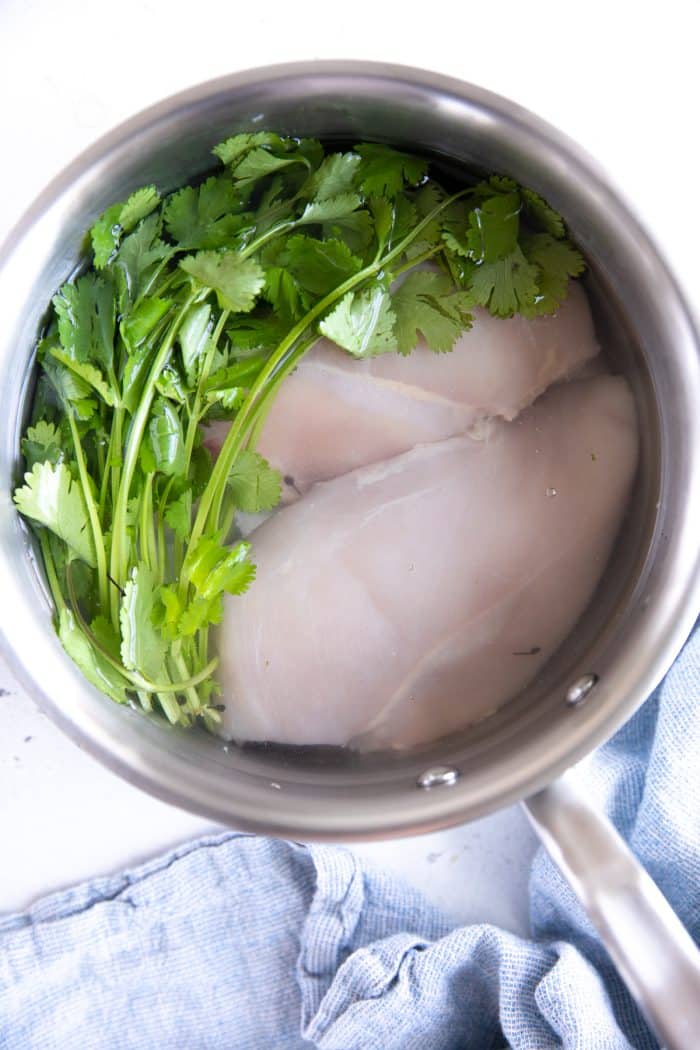
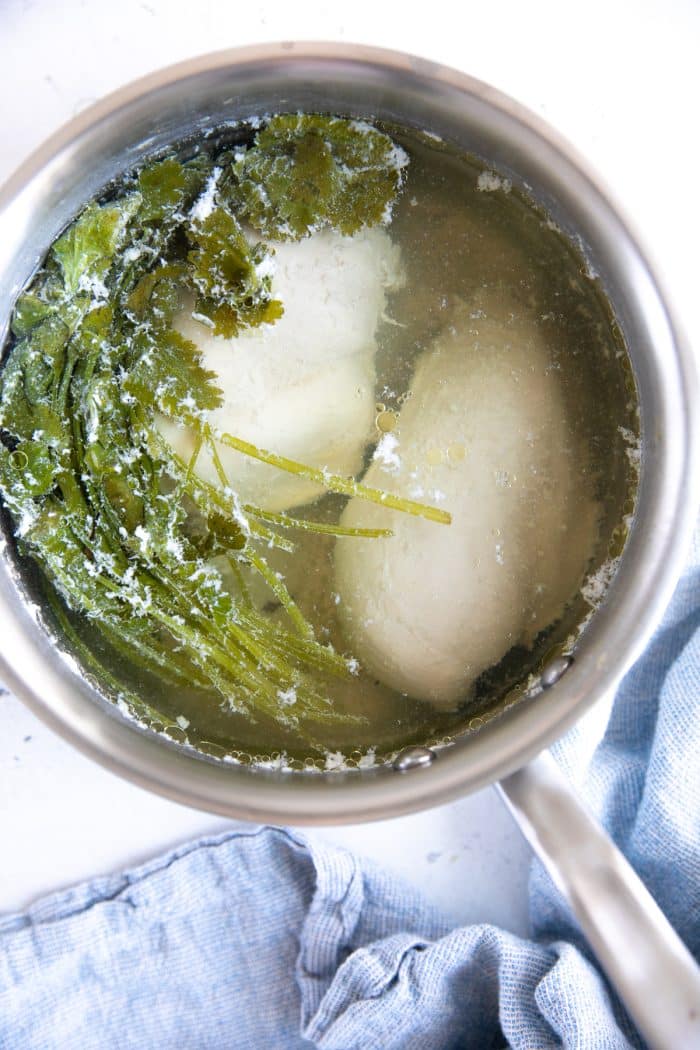
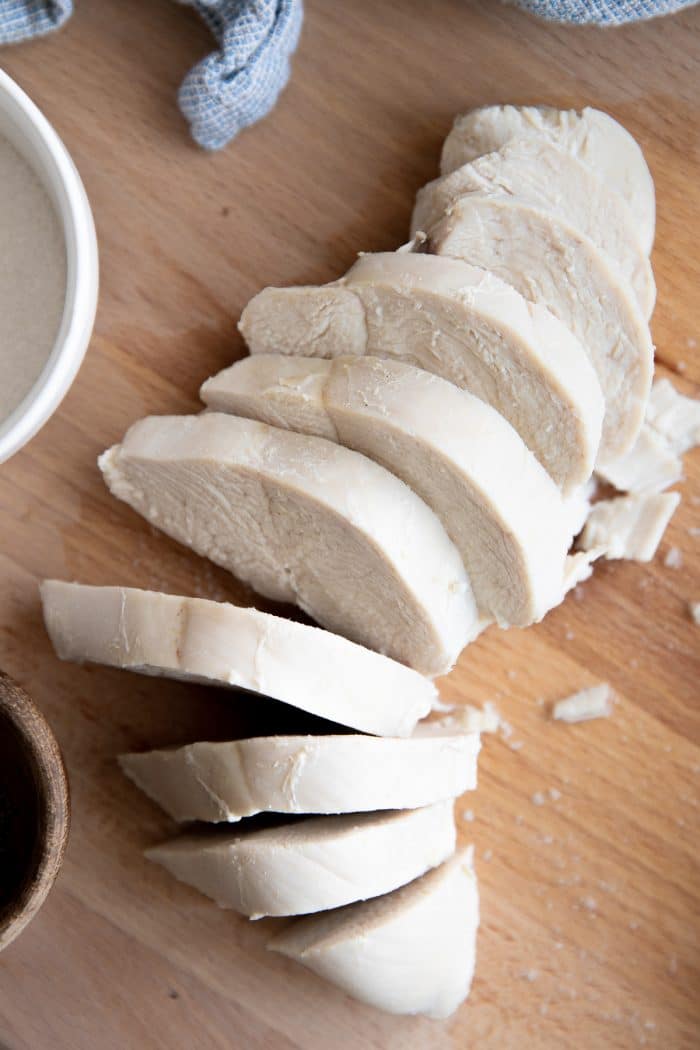

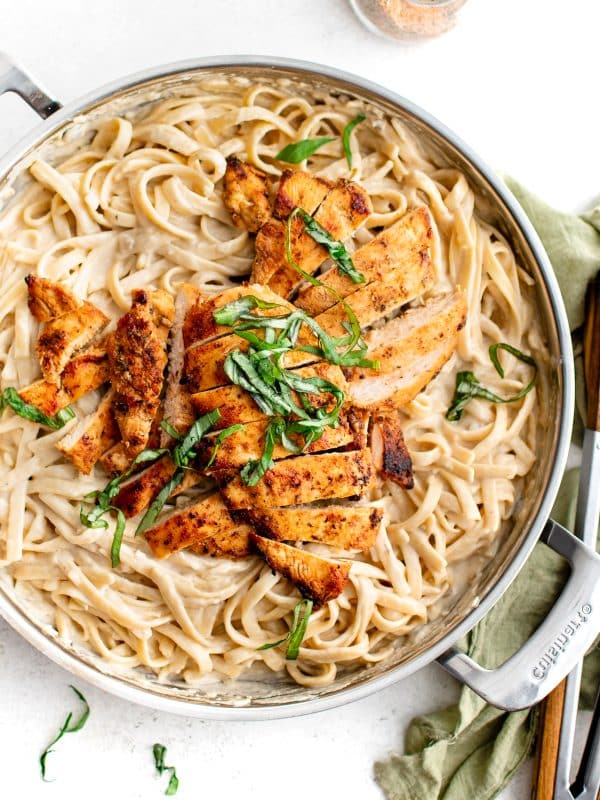
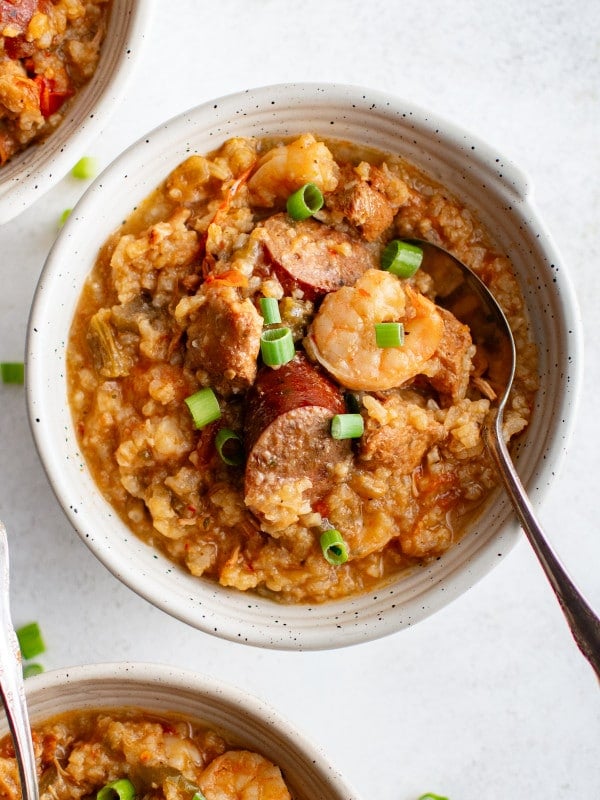










I made Method 1 with frozen breasts and it worked great. I shredded the chicken and used it in a soup. Thanks for sharing this nice keeper.
Thanks for the feedback, Lazyme 🙂
The cooking time in the actual recipe card for Method 1 (5 minutes) is different from the cooking time in the Method 1 description in your article (1-2 minutes for thawed chicken breasts, 4-5 minutes for frozen). I’m going to wing it, but perhaps you could make an update to avoid confusion?
Thanks for the easy to follow instructions, my chicken salad’s chicken turned out perfect!
Thanks for the perfect feedback Maggie 🙂